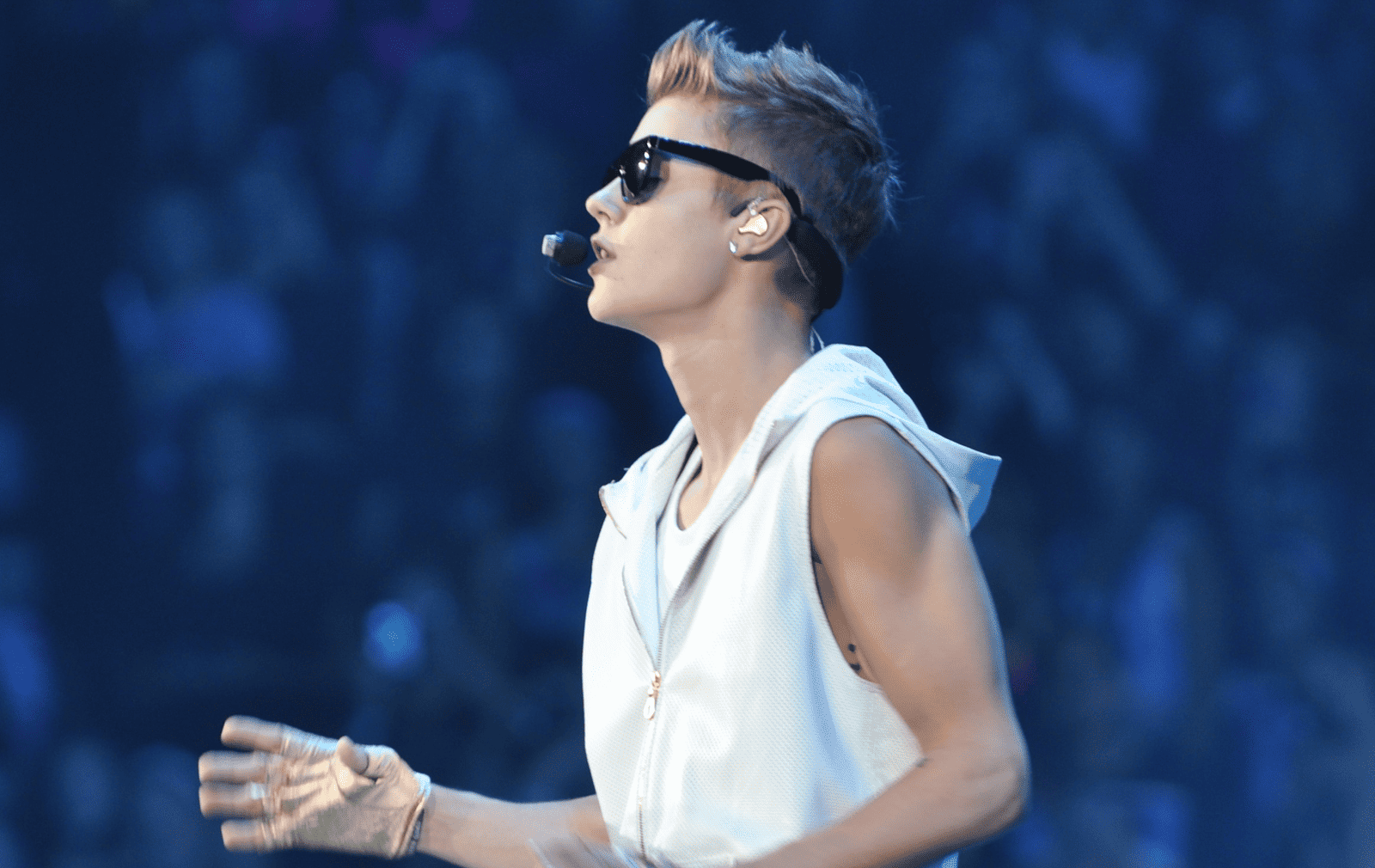
Introduction :
In the tapestry of modern pop culture, few figures have woven a pattern as complex and vibrant as Justin Bieber’s. From his humble beginnings in the small Canadian town of Stratford, Ontario, to his ascent as one of the most globally recognized music artists of the 21st century, Bieber’s story is a cinematic arc that epitomizes the power of modern media and the changing face of celebrity. Discovered at 13 through a YouTube video, his meteoric rise to fame heralded a new era in the music industry, demonstrating the immense potential of social media platforms as launchpads for future superstars.
Justin Bieber’s trajectory is a tale of immense talent and hard work and a narrative of navigating the complex waters of global fame from a young age. His music, an evolving reflection of his personal experiences, mirrors his journey from a teenage heartthrob to a mature artist grappling with life’s intricacies. This piece delves into Bieber’s life and career, exploring the milestones, personal highs and lows, and his indelible impact on his fans and the music industry.
Early Beginnings: A Star Is Born
Justin Bieber’s journey into music started in 1994 in Stratford, Ontario, Canada. Born to Pattie Mallette and Jeremy Bieber, he showed a natural affinity for music from a young age. Raised primarily by his mother, Bieber’s childhood was a musical melting pot, absorbing influences from classical to soul. His mother recognized his musical gifts and nurtured his talents, providing him with a drum kit at age two. Bieber quickly developed a passion for music, teaching himself to play various instruments by age twelve.
The turning point in Bieber’s early life came when he participated in a local singing competition at 12. His performance of Ne-Yo’s “So Sick” garnered local acclaim, but his mother’s decision to post the video on YouTube changed their lives. Initially meant for family and friends, these videos captured the attention of thousands, showcasing Bieber’s raw talent to a global audience. Through these videos, talent manager Scooter Braun discovered Bieber, setting in motion the events that would lead to his future stardom.
Braun, captivated by Bieber’s vocal talent and charisma, flew him to Atlanta to record demo tapes. This trip led to a crucial meeting with R&B superstar Usher, who saw potential in the young artist. After a fierce bidding war, Usher assisted in signing Bieber to Raymond Braun Media Group (RBMG), marking the start of his professional career.
In 2009, Bieber released his first single, “One Time,” to radio while recording his debut album. The track was a commercial success, charting in the top 30 in several international markets and heralding the arrival of a new music sensation. Later that year, his debut EP, “My World,” was released, showcasing his signature pop-R&B style. The EP went platinum in the United States, and Bieber made history as the artist who first had seven tracks from their initial album—featured on the Billboard Hot 100.
Rise to Stardom: The Making of a Teen Idol
The release of “My World 2.0” in 2010 marked a defining moment in Bieber’s career. The album, featuring the iconic single “Baby,” propelled him to global superstardom. The song became an international sensation with its infectious chorus and Ludacris’s guest vocals. In contrast, its music video became one of the most viewed and disliked on YouTube, illustrating its polarizing effect on audiences.
This period also saw the height of ‘Bieber Fever,’ as his legions of young fans, drawn to his boyish charm and catchy pop melodies, propelled him to unprecedented fame. His concerts sold out in minutes, and scenes of genuine adoration from fans marked his public appearances.
In 2011, the documentary “Justin Bieber: Never Say Never” was released, offering fans a behind-the-scenes look at his 2010 concert tour. The film was a box office hit, further cementing his status as a global pop icon. However, this rapid ascent to fame was challenging. Bieber’s personal life, including his high-profile relationship with Selena Gomez, became a constant focus of media attention, adding to the pressures of his public life.
Evolving Artistry: Growth and Maturity
With the release of his third studio album, “Believe,” in 2012, Bieber’s sound began to mature, reflecting his evolution as an artist. The album showcased a more dance-oriented style and departed from the teen pop of his earlier works. Hits like “Boyfriend” and “As Long As You Love Me” highlighted his growth, both in musical style and lyrical content.
However, the following years were tumultuous for Bieber. He faced legal issues and public controversies that tarnished his image.
His behavior was heavily scrutinized and criticized, leading to concerns about his career and well-being. Despite these challenges, Bieber’s career took a positive turn with the release of “Purpose” in 2015. The album was a massive commercial success, featuring introspective lyrics and a more mature sound. Hits like “What Do You Mean?” and “Sorry” dominated the charts and showcased a more reflective Bieber, resonating with a broader audience.
Conclusion:
Justin Bieber’s journey from a teenage YouTube sensation to a global music icon embodies a story of transformation, resilience, and the power of adaptability in the face of fame’s relentless tide. From the streets of Stratford, Ontario, to the pinnacle of international stardom, Bieber’s career is like a rollercoaster of ups and downs, marked by unprecedented success and publicized personal struggles.
Bieber’s impact on the music industry extends far beyond the chart-topping hits and record sales. He represents a paradigm shift in how artists are discovered and promoted in the digital age. His ascent via YouTube signaled a new era where social media platforms became essential for singers to connect with people and build their careers. This shift has democratized music, giving rise to a new generation of musicians who, like Bieber, can share their talents with the world from their homes.
Musically, Bieber’s evolution from a pop teenage idol to a mature artist capable of exploring more profound, more complex themes in his work reflects his personal growth. His journey through fame has been transparent, with his music serving as a public diary that chronicles the challenges of being in the spotlight. Albums like “Purpose” and “Changes” reveal a vulnerability and self-awareness that resonate with a broad audience, showcasing his ability to evolve as a musician and person.
Moreover, Bieber’s story is a testament to the impact of stardom on young artists. His experiences highlight the pressures and expectations placed on young celebrities and the importance of mental and emotional well-being in an industry often characterized by its relentless nature. His comeback and ongoing transformation have inspired many, demonstrating that personal and professional redemption is possible, even under the brightest spotlights.
As Bieber continues to navigate his career, his influence remains significant in music, fashion, and pop culture. His journey, punctuated by achievements and lessons learned, offers an insightful narrative into the realities of modern fame. It underscores that behind the glitz and glamour of celebrity, there is a continuous process of personal growth and self-discovery. Justin Bieber’s story is not just about music; it’s about the human experience, reflecting the universal resilience and the pursuit of authenticity in an ever-changing world.
For similar Content, please visit: yourusanews
Top 5 FAQ’s
1. How did Justin Bieber get discovered?
Justin Bieber was first introduced at the age of 13 by talent manager Scooter Braun, who came across Bieber’s videos on YouTube. Initially posted by his mother to share with family and friends, these videos showcased Bieber’s singing talents. Impressed by what he saw, Braun reached out to Bieber’s family and soon flew him to Atlanta to record demo tapes, which led to his eventual signing with RBMG, a joint venture between Braun and Usher.
2. What impact did Bieber’s early music have on his career?
Bieber’s early music, particularly his debut single “One Time” and his first EP “My World,” significantly impacted his career. They established him as a teen pop sensation and set the foundation for his future success. “My World” was critically acclaimed and commercially successful, making Bieber the first singer with seven top songs to chart on the Billboard Top 100. This early success helped catapult him into stardom.
3. How has Justin Bieber’s music evolved over the years?
Over the years, Justin Bieber’s music has evolved significantly, reflecting his personal growth and experiences. From the pop-centric sounds of his early albums, he transitioned into more mature themes and diverse musical styles, including R&B and dance music. Albums like “Believe,” “Purpose,” and “Changes” show a progression in his artistry, dealing with more complex subjects like love, fame, and personal struggles, resonating with a broader audience.
4. What challenges has Justin Bieber faced in his career?
Justin Bieber has faced several challenges throughout his career, including intense media scrutiny, legal issues, and public controversies. His behavior and personal life, including high-profile relationships, were constantly under the spotlight, leading to a tarnished public image at times. He has also been open about his struggles with mental health, which have impacted his career and personal life.
5. What is Justin Bieber’s influence beyond music?
Beyond music, Justin Bieber has significantly influenced fashion, social media, and pop culture. He has been a trendsetter in fashion, often making headlines for his style. His massive social media presence, with millions of followers, makes him one of the most influential figures in the digital age. His philanthropic efforts in various causes, including education and disaster relief, also showcase his impact beyond the entertainment industry.


